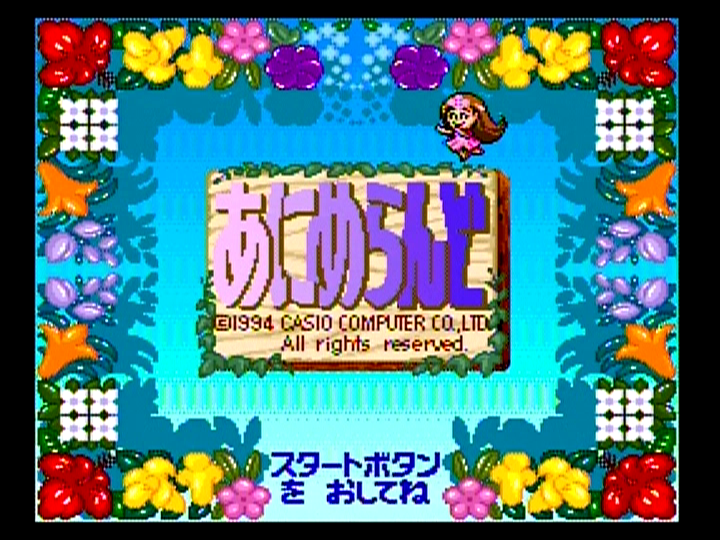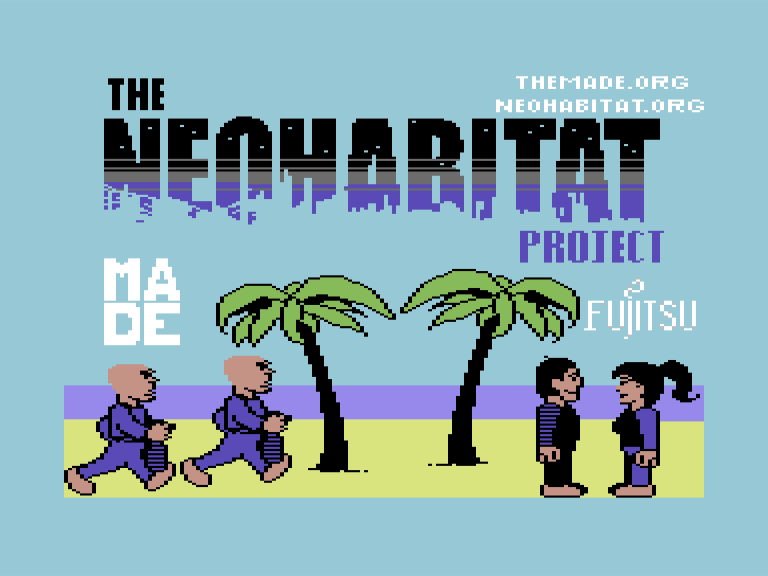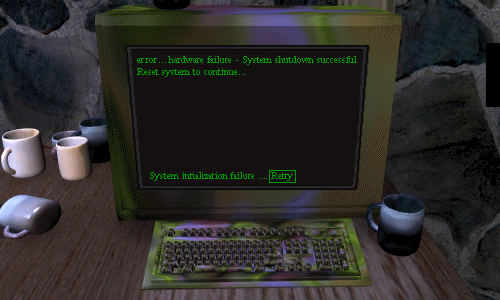More thoughts on emulation and the access barrier 
A string of events this month reminded me of the continued importance of making historical games available for anyone to play. I hammer on this point a lot, but the challenges and possibilities have been especially clear lately.
Last month, a university history professor researching the French Caribbean contacted me to learn more about Freedom: Rebels in the Darkness. I helped them set up an Amiga emulator; until then, they hadn’t been able to play the game themselves and didn’t know they could.
For most people, playing old games and software presents a unique challenge.
Some films and books come in a peculiar format. A novel like S. comes with dozens of pieces and inserts, and it can’t exist only as a PDF. David Lynch’s short film Six Men Getting Sick (Six Times) was meant to be projected onto sculptures. At the risk of oversimplifying, these are, for the most part, exceptions. Most every electronic device today can stream a movie, and nobody needs specialized or expensive equipment for that.
Software, meanwhile, is entirely dependent on format. A game designed for the Nintendo 64 will only run on a Nintendo 64. A computer game might rely on a specific graphics card that hasn’t been manufactured in decades. To play an older game, you need to have the old system or know how to use an emulator.
Earlier this week, Nintendo announced the Super NES Classic, a limited-run console that emulates Super Nintendo games. It costs $80, plugs right into most TVs, and works out of the box. Although we don’t know how closely it mimics an actual Super Nintendo, it’s a boon for people who might not have much experience with games and want to play notable titles from Nintendo’s back catalog without researching emulation software or wading into the costly game collecting market where a copy of EarthBound costs hundreds of dollars. But those people probably won’t be able to buy it in a year. Nintendo super-fans and nostalgists will devour this thing and cause it to sell out instantly; they’ve also been the first ones to decry it as inauthentic compared to owning the original hardware.
Asking people to use original hardware is impractical. Beyond availability issues and the price barrier, outside of a library, archive, or museum, we can’t expect someone to make room for a Windows 95 desktop computer or to figure out how to plug an out-of-date video cable into their home A/V system if they want to play a game that came out over ten years ago.
And as it stands now, the emulation route often isn’t more convenient. Assuming you know to seek out emulation software at all, setting it up can demand hours of experimentation, sifting through message forum posts, and browsing sketchy emulation websites. DOSBox, the de facto standard for DOS computer emulation, still uses arcane text-based settings, leaving third-party programs like D-Fend Reloaded to work around its major usability issues. I’ve spent days of my life configuring a PlayStation emulator, and it still isn’t perfect. How does a curious person without time, money, or technical skills address those problems?

Screenshot from Anime Land for the Casio Loopy. Image from FEMICOM Museum
FEMICOM Museum recently started a Twitter thread of “fact[s] about the history of girls’ video games and software.” One of the most fun facts was about the Casio Loopy, a 1995 console targeted to girls that included a sticker printer. But FEMICOM also shared that the system still lacks extensive emulation support. This overlooked chapter of girls’ game history has been a low priority for the emulation community, and it remains largely inaccessible.
Many emulation software projects are run by enthusiast volunteers and the “retrogaming” community. Their passion has led to great breakthroughs, such as extremely accurate emulators for the biggest classic consoles, ambitious projects like the Multi Emulator Super System (MESS), and fully functioning replicas of Nintendo hardware. But those communities tend to focus most on the games and platforms that already have popular attention. Things outside that like the Casio Loopy, multimedia art, educational software, and games from other parts of the world don’t receive as much dedicated care. And the developers assume (perhaps rightly) that their current userbase has a high level of technical expertise and wouldn’t need simpler tools. Unintentionally, those factors narrow our window on gaming and software history to whatever is already enshrined in the existing narrative about game history – an incomplete, linear story about console wars and hit genres – as told by and for the people (invariably men) who already know how to navigate it.
Ease-of-use is a problem even for widely used emulation software like DOSBox or RetroArch. It gets worse for games and platforms outside the established historical narrative. The popular Basilisk II and SheepShaver family of Macintosh emulators was abandoned by its developer nine years ago and has received only custodial updates since then; the programs frequently crash or fail to launch with no explanation.
The technical and cultural barriers preventing new audiences from playing older games are significant – and nearly invisible to people who have grown accustomed to them after spending so many years immersed in the tech and gaming scenes. If the goal of the retrogaming community is keep old games alive, they need to confront this.
At E3 2017, Microsoft announced that the Xbox One console family would support limited backwards compatibility with games for the original Xbox system. As with Xbox 360 games on the Xbox One, this will be achieved seamlessly through emulation. This feature is limited to games Microsoft can clear the rights for, but their announcement is still the most significant step towards broadening access to the original Xbox catalog in a long time.
Game publishers are gradually realizing, if only for business reasons, how important simplified, turnkey emulation can be. It broadens the audience of who can experience old games. Official support will never cover everything, but it makes a big difference. If you buy SimCity 2000 on GOG.com, you get a pre-configured version of DOSBox; though it isn’t a perfect experience, this is leaps and bounds easier for most players than setting up their own emulator.

Screenshot from The Neohabitat Project, an emulated revival of the online Commodore 64 game Habitat organized by the Museum of Art and Digital Entertainment. The game comes with a pre-configured C64 emulator.
In an ideal world, hobbyist emulators and retrogaming would prioritize ease-of-access too. Obviously, though, volunteer emulation projects have limited resources. Some people can directly contribute their coding skills. But the rest of us can advocate for how much ease-of-use matters. It’s not a perk or a bonus feature; it’s fundamental to the goals of emulating old games.
We should push for user-friendlier applications like D-Fend Reloaded to be the standard. We can write better documentation for emulators to help new users understand how they work. In our own communities and social circles, we can destigmatize emulation as a way to play historical games. And we must support projects and tools that lower the access barrier, official or otherwise.
Weekend read: Inside a Mac emulator – warms my heart to see people still remember Dark Castle as fondly as I do. https://t.co/Nml6uOjwIQ
— Justin Trudeau (@JustinTrudeau) June 10, 2017
On June 10th, 2017, Canadian Prime Minster Justin Trudeau tweeted about the Internet Archive’s Macintosh emulator, specifically about being able to play Dark Castle and Wizardry. Thanks to the work by Internet Archive staff and contributors, the Prime Minster of Canada could, if he wanted, instantly play a three-decades-old Macintosh game. This wouldn’t have been possible just a few years ago.
Emulation technology may not be perfect now, but it is important. The simplest emulation software (the Nintendo plug-and-play devices, bundled games that run in a single click) allows anyone access a deep cultural history, no matter their skillset or knowledge about gaming. To grow the discussion around games, send it in new directions, and connect it with other disciplines, games need to be available to the widest possible audience.
I keep thinking about that history professor. What else can we change, technologically and culturally, to make it easier for someone like them to play an old game? To know that was an option at all?


i just discovered this site while looking to download an old game (drowed god) and this was a fun read!
I would imagine that another factor contributing to this access barrier is Copyright. Unless things have changed since the last time I looked, although getting access to the game software itself is normally reasonably painless, for some emulated platforms the emulator’s instructions will inform you that you need a ROM image (e.g. I think Basilisk II is like this). You will be told that you either need to dump the contents of some internal ROM chip using some exotic hardware that even most programmers won’t have access to, or go search the web for a shady website to download it from. Emulator developers seem to dare not even link to such websites for fear of being accused of piracy.
Perhaps the Internet Archive can help here by being the brave integrator that combines a JavaScript-based emulator with the required (but Copyrighted) ROM images and game software and makes them accessible via a click?
There are still barriers for games (especially if you aren’t familiar with where to look), but you’re right that unclear legal boundaries for the platforms themselves are a big obstacle for emulation.
A really tricky example is WinWorld, a website that hosts copies of many Microsoft operating systems and products. The site’s owners make a point of saying that Windows XP and later versions of Office are off-limits because of a takedown request from Microsoft… but all the downloads and serial numbers for Windows 95 are still available. Both are violations of copyright law, but only one was actually enforced. Does this mean Microsoft has effectively abandoned Windows 95? And even if they did, it still seems brazen to openly share copies of the operating system.
More confusingly, Apple used to offer free downloads for their old operating systems and drivers, but now they don’t. So are they still okay to put up for free?
It’s still so uncertain, and we need to keep testing those waters. The Internet Archive publicizing its emulated collections has been a really important step in that, and I’m fascinated to see what comes after that. Imagine a standalone Macintosh emulator with the leeway to come bundled with the operating system.